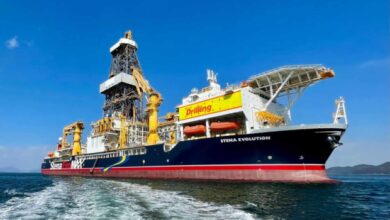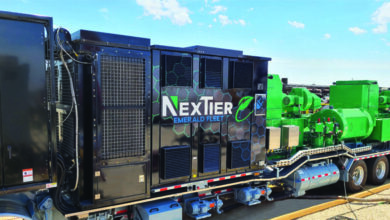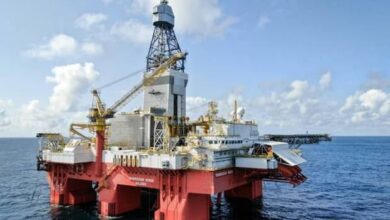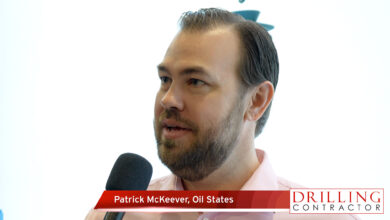Casing, couplings manufacturers develop new materials, designs to keep pace with evolving demands in fracking long laterals
Industry continues to design and test premium, semi-premium connections to withstand high pressures, severe bending loads
By Kelli Ainsworth Robinson, Associate Editor

Evolving horizontal well plans and frac designs are driving advances in the design of connections. Connections used today have to run through laterals that can be up to three or four miles, while under high pressures. That is leading to ongoing efforts to improve connection reliability.
“There’s been a steady progression in connection design over the years to keep up with the increasing demands of the industry,” Michael Burns, Principal at Stress Engineering Services, said in a presentation at the IADC Q1 2018 Drilling Engineers Committee Technology Forum on 21 March in Houston. During his presentation, Mr Burns described the evolution of casing design connections in fracking operations, as well as the challenges that connections manufacturers are still trying to address.
During the early days of horizontal drilling, a well with 10 to 15 frac stages was considered complex, Mr Burns noted. Operators typically drilled these wells with API 8-Round connections. Casing and coupling stock was generally high-collapse P110-rated for improved performance. “Operators wanted better steel,” Mr Burns said. “They wanted something a little more reliable, so they bought high-collapse P-110 for demanding fracking operations.” Casing manufacturers were able to develop casing with high collapse resistance by moving from cold straightening to warm straightening in the manufacturing process, or by increasing the yield strength of the connection.
However, couplings manufacturers also shifted to high-collapse coupling stock to accompany the high-collapse casing. This, Mr Burns explained, led to increased instances of split couplings due to hydrogen stress cracking. The recipe for hydrogen stress cracking, he explained, is susceptible material, source hydrogen and high stress. Even in sweet wells, acid treatments can introduce hydrogen. And, he noted, API 8-Round connections have high hoop stresses. “The high hoop stresses combined with the hydrogen means that the material is always at risk of stress cracking,” he said. “When they started making high-collapse couplings, they made the couplings more susceptible to cracking, and so they ended up with a lot more split couplings.”
Although high-collapse coupling stock was manufactured with the intention of improving the collapse resistance of casing strings, it ultimately led to more failures by increasing the likelihood of hydrogen stress cracking. The range of yield strengths permitted for P-110 is between 110 to 140 ksi. However, many couplings that were failing were within the top end of that range, at 130 to 135 ksi, Mr Burns said.
This prompted coupling manufacturers to adopt restricted yield specifications for coupling stock, limiting the range for P-110 to 110 to 125 ksi. Additionally, operators shifted away from using API 8-Round connections due to increasing well demands. “Those two things caused the incidence of these types of failures to drop precipitously,” he said. “We went from seeing 50 to 100 a year to three or four every couple of years.”
Increasing well pressures and long laterals were major factors influencing operators’ decision to use a new connection type. Pressures in the Barnett were between 6,000 to 8,000 ksi, while Haynesville pressures can exceed 10,000 ksi. At the same time, as laterals increased in length, that meant that the casing was being rotated through longer holes and becoming more vulnerable to fatigue. “There’s been an increasing demand for improved performance of the connections in longer laterals and tighter holes,” Mr Burns said. “The connections have evolved in concert.”
First, operators shifted to an API buttress connection, then buttress connections with torque rings. This was followed by a move to shouldered buttress connections. With shouldered buttress connections, manufacturers found by that slightly increasing the outer diameter of the connection, “that extra wall thickness makes a big difference in reducing stresses within the coupling, therefore leading to improved reliability,” Mr Burns said.
Over the past few years, he noted, operators have increasingly opted for semi-premium and premium connections. The semi-premium connections use premium thread forms but without a metal-to-metal seal. Instead, the thread form is designed to carry more of the makeup load, Mr Burns explained. Premium connections with metal-to-metal seals – which tend to be more expensive – are now used for the most demanding applications.
Today, high pressures and severe bending loads can induce leaks through the threads during fracking operations. These failures are more mechanical than metallurgical in nature, Mr Burns noted, though engineers are working to understand and combat these problems. “Engineers are continuing to design and test semi-premium connections for the most demanding applications.”
However, he added, no matter how well a connection is designed, if it’s not run correctly, failures can and will still occur. “Following API and manufacturer recommended practices makes a huge difference,” he said.
He emphasized that time and care while running casing and connections go a long way, rather than rushing in the hopes of saving money. “If you push it just a little too hard and crossthread the connection or drop the string in the well, all the money that you’re trying to save by hurrying just fell down to the bottom of the hole.” DC




